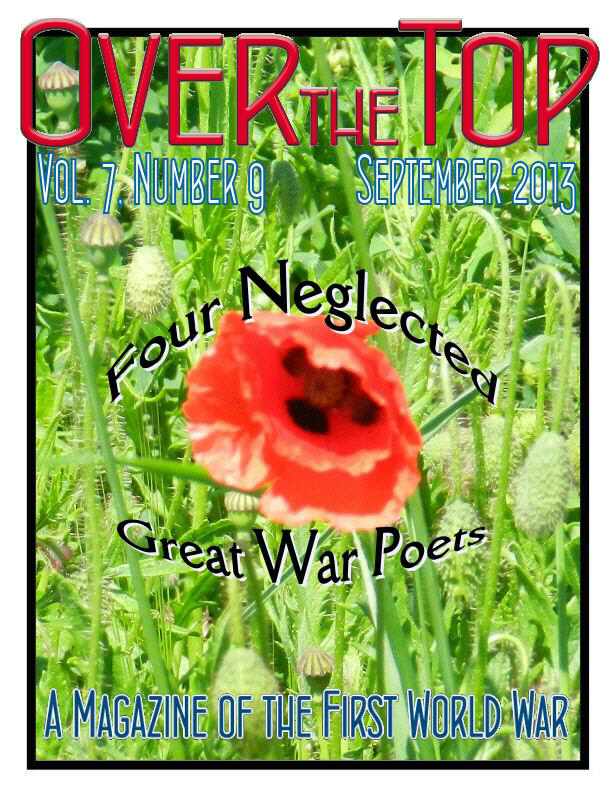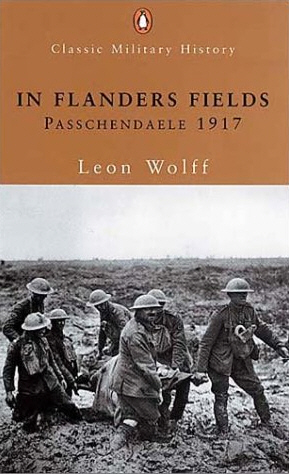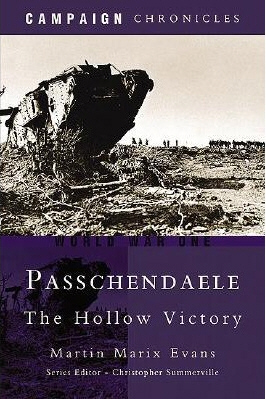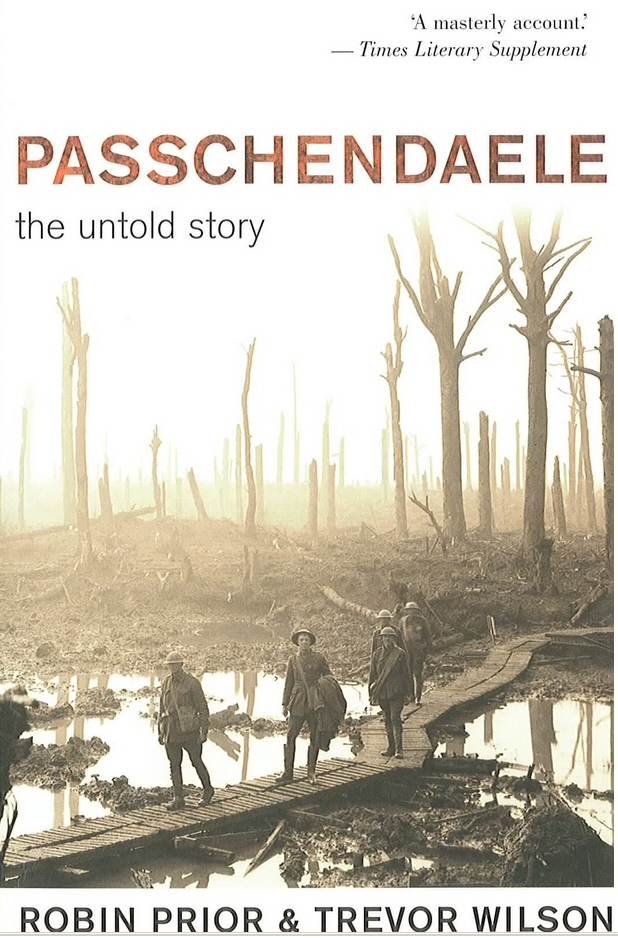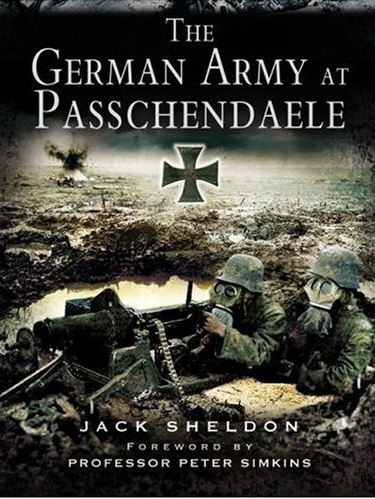
September 2013 |
 |
|


The Great War Centennial at the Grass Roots
Regular readers of the St. Mihiel Trip-Wire, and its sister publication, our daily blog Roads to the Great War, know that we have taken on the mission of supporting, encouraging, and publicizing the unfolding centennial commemorations of the war. We have focused previously on the efforts of the larger, nationwide organizations, like the new Centennial Commemoration Commission, the U.S. Army, the American Battle Monuments Commission, the First Division Foundation and Museum, and so forth. We will continue to do so. Frankly, I have become excited about what I've heard from these organizations.
Learning, though, as I've gone along, I see there is going to be another dimension to the commemoration—one that is coming, usually spontaneously, from what I call the "Grass Roots". I am now hearing about efforts being generated in states, local communities, schools (including home-schoolers) and by clubs, such as gatherings of genealogical researchers. I've decided that Roads to the Great War and the Trip-Wire are going to be the outlets for information about such efforts. First, because they are worthy of the attention of you readers, but also, because they are going to need help and encouragement from their fellow WWI students and enthusiasts. Typically, these projects are the inspiration of a single individual or a small group, and have a limited scope. Then, like all of us in our own voyages of discovery into the events of 1914-1918, they come to see almost limitless possibilities for their projects, when they realize that, in America, the Great War (even though it's forgotten by many today) touched every community, family, and individual in the nation somehow. With this new realization comes a dawning that help, in the way of collaborators and money, is needed to do the bigger project properly.
We are going to bring the best of these projects to your attention. If a story on a grass roots effort appears in one my publications you may be sure that I support it, and that I hope that you will also do, if in no other way than to send of message of encouragement to the organizers.
Below, in this issue of the Trip-Wire, we feature Mark Levitch's World War I Memorial Inventory Project. Since our last issue, we have also featured Dennis Skupinski's, Michigan in World War I Project. Please take a look, the Michigan article can be found at:
Roads to the Great War, 10 August 2013
MH

|
2013
 First Division Museum at Cantigny, "Faces of the 1st," including extensive coverage of WWI, Wheaton, Il, through 2 September 2013. Online Exhibit. First Division Museum at Cantigny, "Faces of the 1st," including extensive coverage of WWI, Wheaton, Il, through 2 September 2013. Online Exhibit.
 New York State Military Museum, "Fiery Trial and Sacrifice - New York and the First World War," ongoing exhibit, Saratoga Springs, NY. Virtual Tour. New York State Military Museum, "Fiery Trial and Sacrifice - New York and the First World War," ongoing exhibit, Saratoga Springs, NY. Virtual Tour.
 The National World War I Museum in Kansas City, MO, has a current exhibit running on "The Road to War," running through April 2014. Website. The National World War I Museum in Kansas City, MO, has a current exhibit running on "The Road to War," running through April 2014. Website.
 WW1HA Bay Area Chapter Meeting: Charlotte Descamps on "Life on the Passchendaele Battlefield 96 Years Later," 7 September, San Francisco, 10:00 A.M., 900 7th St. Email Sal Compagno for details. WW1HA Bay Area Chapter Meeting: Charlotte Descamps on "Life on the Passchendaele Battlefield 96 Years Later," 7 September, San Francisco, 10:00 A.M., 900 7th St. Email Sal Compagno for details.
 The MacArthur Memorial and Museum in Norfolk, VA, has a current exhibit running on "The 42nd 'Rainbow' Division in World War One," running through September 2014. Website. The MacArthur Memorial and Museum in Norfolk, VA, has a current exhibit running on "The 42nd 'Rainbow' Division in World War One," running through September 2014. Website.
 Western Front Association — East Coast Symposium , Authors Richard Rubin & Robert Dalessandro, and Much More; Saturday 12 October 2013 at the York County Heritage Trust, York, PA. Download Flyer. Western Front Association — East Coast Symposium , Authors Richard Rubin & Robert Dalessandro, and Much More; Saturday 12 October 2013 at the York County Heritage Trust, York, PA. Download Flyer.
2014
 The U.S. Air Force National Museum at Wright-Patterson AFB, Ohio, and the League of WWI Aviation Historians (OvertheFront.com), are collaborating on what will be the first U.S.-based mega-event for the WWI centennial. The League is scheduling its 2014 Seminar to correspond with the WWI Dawn Patrol Fly-In at the Museum in Dayton, OH, 24-28 September 2014. Mark it down on your calendar. The U.S. Air Force National Museum at Wright-Patterson AFB, Ohio, and the League of WWI Aviation Historians (OvertheFront.com), are collaborating on what will be the first U.S.-based mega-event for the WWI centennial. The League is scheduling its 2014 Seminar to correspond with the WWI Dawn Patrol Fly-In at the Museum in Dayton, OH, 24-28 September 2014. Mark it down on your calendar.
|
|
Cigarette Card
Recruiting Poster
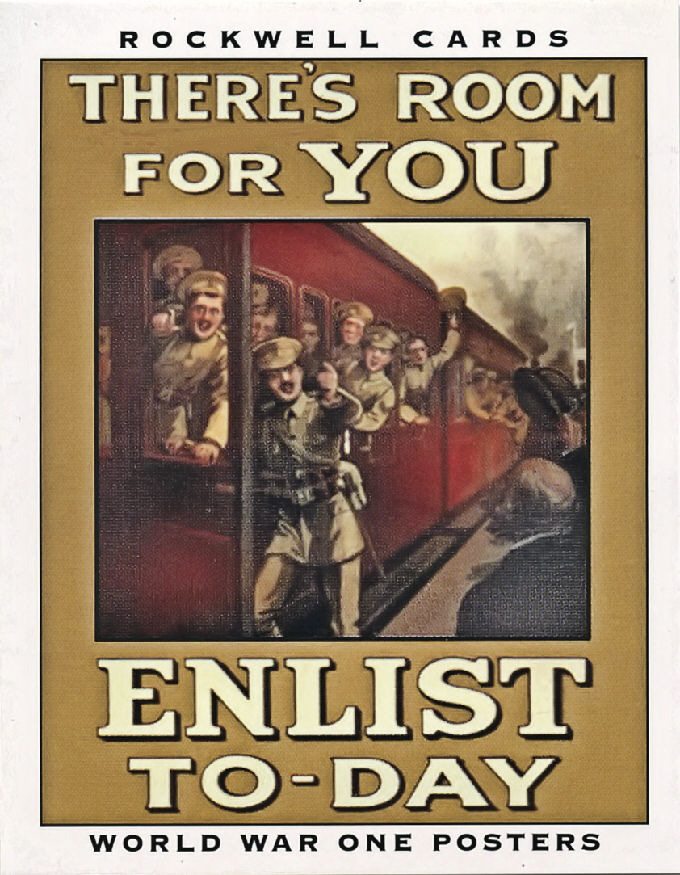
From the Collection of Cyril Myzansky

The U.S. Navy in the Great War
Without any battleship or carrier actions during the American period of participation, and with U.S. amphibious and submarine capability in their infancy, there wasn't much to keep the U.S. Navy busy. Wrong!
 Excellent Overview from Naval-History.Net
Excellent Overview from Naval-History.Net
 American Battleships with the Grand Fleet
American Battleships with the Grand Fleet
 U.S. Naval Aviation in World War 1
U.S. Naval Aviation in World War 1
 The North Sea Mine Barrage
The North Sea Mine Barrage
 Notes on Navy and Marine Corps WWI Casualties
Notes on Navy and Marine Corps WWI Casualties
 Anglo-American Naval Inventors, 1890–1919: Last of a Breed (pdf download)
Anglo-American Naval Inventors, 1890–1919: Last of a Breed (pdf download)
 Chester Nimitz-Submariner First (Short section on Nimitz in WWI)
Chester Nimitz-Submariner First (Short section on Nimitz in WWI)
 Admiral William Sims
Admiral William Sims

Franz Ferdinand's Spooky License Plate
Old Fritz thinks this is a bit of a stretch, but amusing nonetheless. The license plate on the vehicle (still on display in Vienna) in which Archduke Franz Ferdinand and his beloved Sophie were riding that day in Sarajevo when both "bought the farm" was: A III 1118. Some with a supernatural bent have decoded this in this fashion: A = Armistice; II = 11; I1 = 11; and 18 = 18. Thus, they infer that the event that triggered the war contained a premonition of the war's end, the Armistice of 11-11-1918. If you don't mind mixing Roman and Arabic numerals, are able to ignore the rules of the two number systems, and can overlook inconvenient spacing, you still can "Believe It or Not!"
Who Was "Big" Nims?
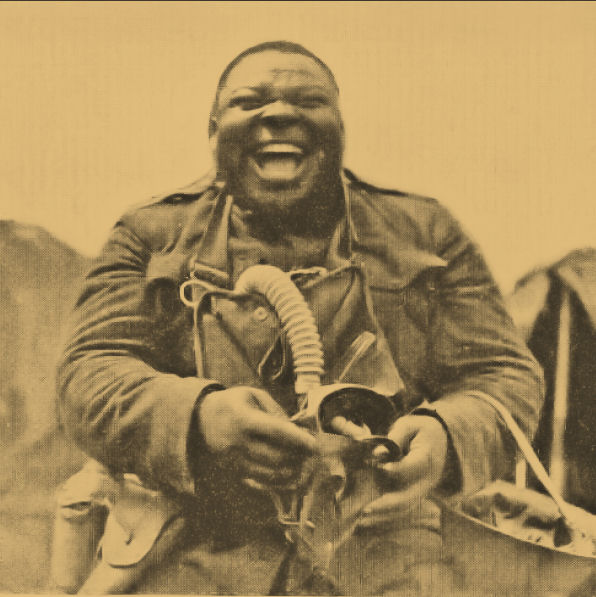
(Text Revised and Corrected 4 September 2013)
This photo of a Doughboy with an infectious laugh has appeared in publications about the AEF for nearly a century. The only identifying information has been his nickname "Big" Nims, his unit—the 366th infantry of the 92nd division—and the obvious fact he's participating in a gas mask drill. If you have any additional information on Big Nims, please send it along and we will post it in a future issue. (email)

My God, all that these heroic [Turkish] soldiers want is to introduce Thy name to the French and the English. Please accept this honorable desire of ours and make our bayonets sharper so that we may destroy our enemy! . . .You have already destroyed a great number of them so destroy some more.
Hasan Ethem, KIA, 57th Turkish Regiment
Last Letter, 17 April 1915
Quoted by T.H.E. Travers
|

|

U.S. Centennial Organizations & Resources
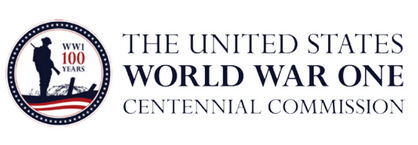
worldwar-1centennial.org/
|
This month in our centennial section, the St. Mihiel Trip-Wire features news on the activation of the National Centennial Commemoration Commission and a tremendously important "grass roots" effort the World War I Memorial Inventory Project. MH
News About the WW1 Centennial Commemoration Commission
The initial meeting of the World War One Centennial Commission will take place on Friday, 13 September 2013, 9:30 a.m.–5:30 p.m. (Central Time) at the National World War 1 Museum at Liberty Memorial in Kansas City, MO. The meeting will be open to the public. All twelve seats on the commission have now been filled.
The commission was established by the World War I Centennial Commission Act, part of Public Law 112-272 passed by the 112th Congress and signed by the President on January 16, 2013. The Act mandated that the Commission's first meeting take place at the Museum. The initial meeting will include the swearing in of the twelve commissioners, a variety of administrative and organizational business, and general discussion of the commemoration of the Great War.
Public participation will be allowed for pre-registered speakers during the public comment period. Speakers will be limited to five minutes each. Information on registering to speak is available in the meeting notice published in the Federal Register on 8 August. (link)
In an earlier issue of the Trip-Wire, we had started to present biographies of the commission members. However, the Commission staff has done an excellent job of presenting the same material, so we will simply provide a link to their biographies page. However, we would like to present a full list in alphabetical order of the commissioners, who will be guiding America's commemorative efforts
|
Dr. Mary Davidson Cohen, Chair of the Museum Board of the Liberty Memorial Association in Kansas City, Missouri.
|
James B. Nutter, Sr. of Kansas City, Missouri, a national pioneer in mortgage lending
|
|
Colonel Robert J. Dalessandro, USA (Ret.), Executive Director/Chief of Military History, U.S. Army Center of Military History
|
Dr. Libby O'Connell, Chief Historian, Senior Vice President, Corporate Outreach, AETN
|
|
Edwin Fountain of Arlington, Virginia, Attorney and Co-founder of the World War I Memorial Foundation
|
The Honorable Ted Poe, 2nd Congressional District, Texas
|
|
Jerry L. Hester, Formerly Chairman of the 70th Anniversary WWI National Committee.
|
The Honorable Isaac Newton "Ike" Skelton IV, former U.S. Representative for Missouri's 4th congressional district
|
|
Richard Kolb of Kansas City, Missouri, Publisher, Director of Publications and Editor-in-Chief of the VFW Magazine
|
Major General Alfred A. Valenzuela, USA (Ret.)
|
|
Colonel Thomas Moe, USAF (Ret.), formerly Director of the Ohio Department of Veterans Services
|
James S. Whitfield of Independence, Missouri, is a U.S. Navy veteran of World War II and former American Legion officer
|
Click Here for Full Biographies of the Commissioners
Introducing the World War I
Memorial Inventory Project
Hundreds, maybe thousands, of communities in America have World War I monuments. Often these are the focal points of November 11th events, but just as often they are neglected. Mark Levitch of the World War Memorial Inventory Project plans to help maximize the first case during the centennial and to correct the matter of neglect. Below he describes his program, and we will leave that to Mark. However, he has made available to us a collage—in full poster size—that displays 61 of the memorials he has already catalogued. Viewing this will give you a sense of the scope of the challenge ahead and the commitment the Inventory Project is making. The poster is so large I've had to break it into four parts and move the main display off-site. Below is a thumbnail of the top right quadrant of the poster, just click on it and you will move to our blog, Roads to the Great War, where we are able to display each section at full size. Then please read Mark's project description below and help him with this important and worthy effort.
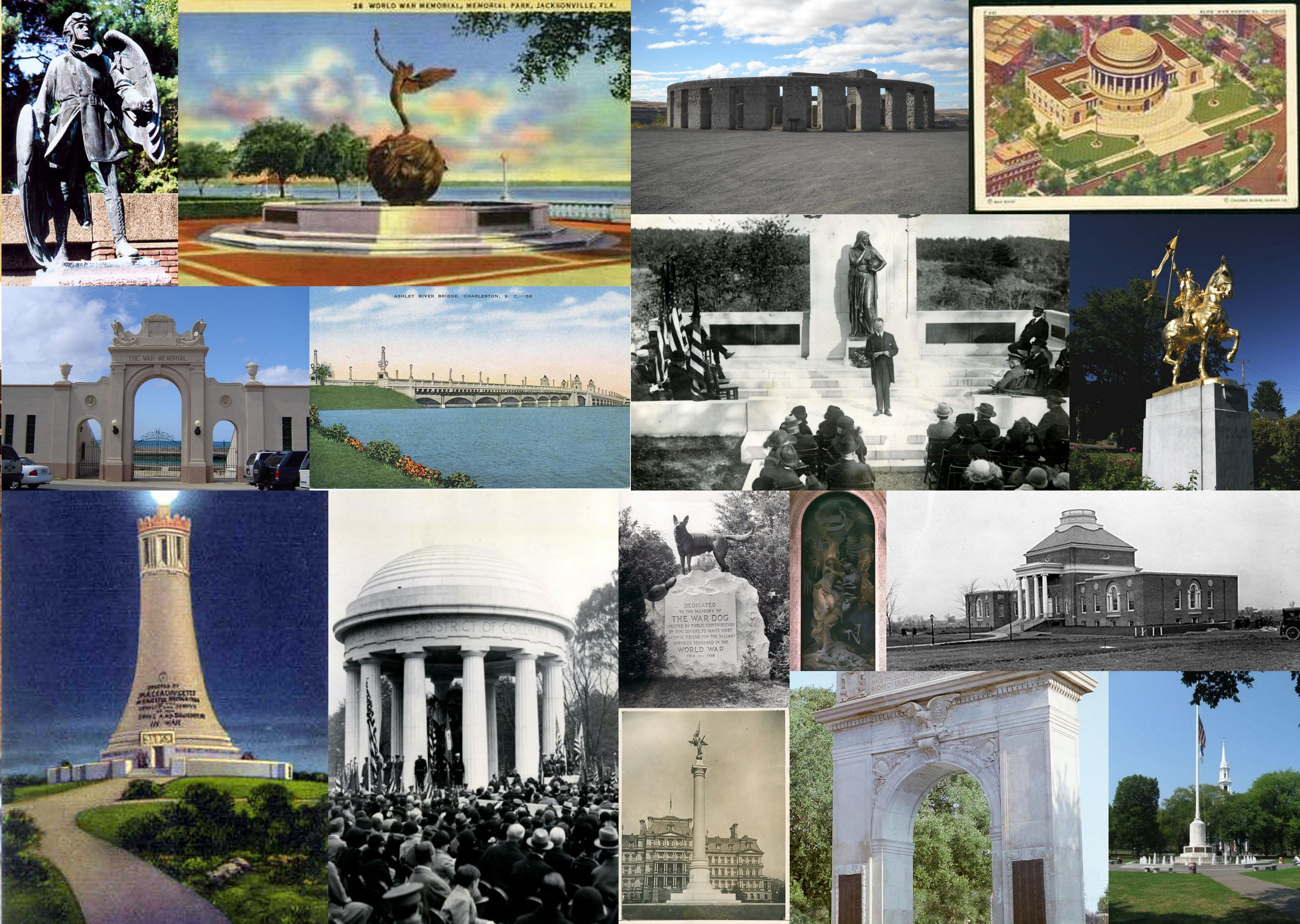
Click on Collage to See Full Sized Versions of
All Four Sections With Key
Project Discussion by Mark Levitch, Director
The World War I Memorial Inventory Project, which was recently endorsed by the National World War I Museum, is a volunteer-based effort to assemble an online inventory of all World War I memorials and monuments in the United States. Numbering in the thousands, spread across the country, and ranging from simple honor rolls to grandiose architectural complexes, these memorials are tangible and potent reminders of the significance the nation attached to the conflict and to commemorating those who participated in it.
The first rationale for the inventory project is preservation. Even many well-known memorials are in poor condition; others have disappeared entirely due to theft, neglect, or vandalism. An inventory will identify, document, and preliminarily assess the condition of the memorials, providing a baseline record that is a prerequisite for any preservation effort.
The second rationale is education. The inventory, to be conducted by volunteers — including schoolchildren — will encourage historical research to uncover the stories of local memorials and the people they commemorate (which research will be added to the memorial's record). The project will bring attention to the memorials, singly and collectively, and to the war that occasioned them.
The inventory aims, too, to be a significant public history resource. Basic survey and historical information, photos, and mapping capabilities will facilitate research. The memorial database will include the names inscribed on memorials, and these, in turn, can be linked to other resources, such as the ABMC World War I database. The website will also feature short, scholar-authored interpretive essays.
The Memorial Inventory Project's website and database — to which researchers will be able to upload information remotely — are under construction. In the meantime, we are looking for volunteers to help coordinate the effort and (tax-deductible) donations to help defray costs. Contact and donations can be made at the placeholder website: wwi-inventory.org.
|
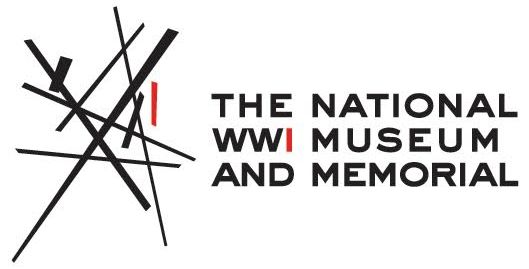
theworldwar.org/
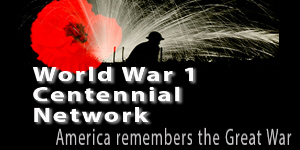
www.ww1-centennial.org/

history.army.mil/
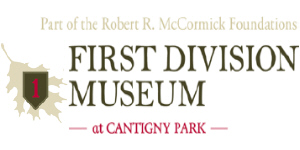
www.firstdivisionmuseum.org/

www.abmc.gov/
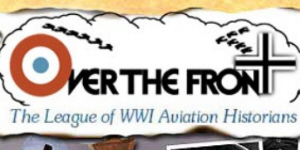
www.overthefront.com/
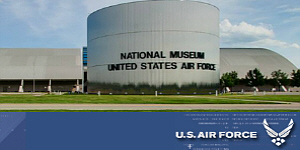
www.nationalmuseum.af.mil/
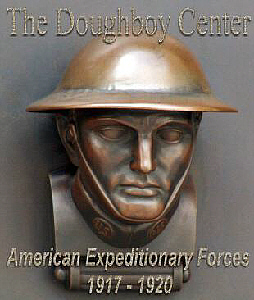
www.worldwar1.com/dbc/
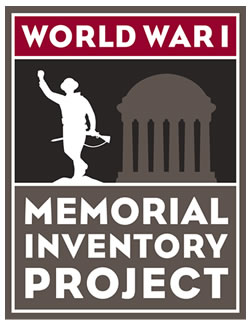
wwi-inventory.org/

wisconsinhistory.org/
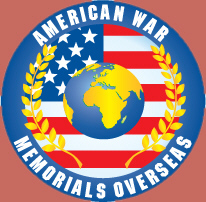
www.uswarmemorials.org/
|
|

September 1913
September: it was the most beautiful of words, he’d always felt, evoking orange-flowers, swallows, and regret. - Alexander Theroux
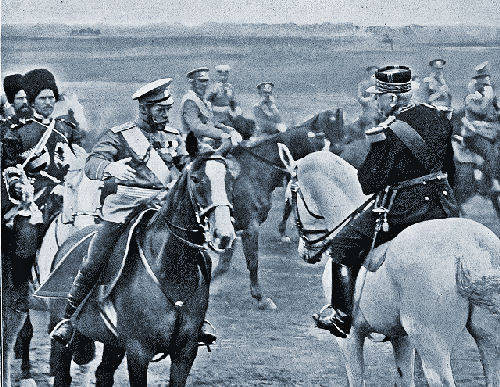
Tsar Nicholas Entertaining French General Joffre in 1913
By September 1913, many actions were underway that would contribute to the chaos of 1914. Archduke Franz Ferdinand, for example, being recently appointed Inspector General of the Dual-Empire's armed forces, started planning to attend the exercises planned in Bosnia the following June. Besides observing the military maneuvers, he and his advisors thought he could win popular support, especially among the Muslim population, and counter Serbian sponsored discontent.
Vienna on the
Eve of War
A Great Read
|
|
At the end of the month, Bulgaria—big loser of the Second Balkan War—decided to negotiate with the Turks—big loser of the First Balkan War—directly. The terms of the Treaty of Constantinople they negotiated provided that defeated Bulgaria would agree to Turkey's repossession of Adrianople (Edirne), plus territory up to the Maritsa River. In addition, the two countries agreed to resume diplomatic relations, exchange prisoners, and establish a general amnesty. The former adversaries—both embittered by their experience in the small wars of the 1910s— would find themselves allied with the Central Powers in the Great War, hoping to reverse their declining fortunes.
Possibly the most fateful activity of the month was the execution of the latest Franco-Russian military convention. It had been negotiated in August following a visit by General Joffre, who was pleased with the progress of Russia's strategic railroad upgrade. In great specificity the agreement outlined the level of commitment, triggering points, and schedule for the opening stages of a two-front war against Germany. Recognizing that Germany would concentrate on France initially, it stated that France would begin offensive no later than day 11, and Russia by day 15. The French government also agreed to further loans for Russian rail building and arms.
Origins of the First World War
and the WWW-Virtual Library
|
|

Flyers and application form for 2014 "Opening Moves" and
"Miracle of the Marne" Trips Now Available
(download pdf file here)

Click on Image to Send Email
|
|
|

|

King George VI
(1885-1952)
Naval Officer and Aviator
|
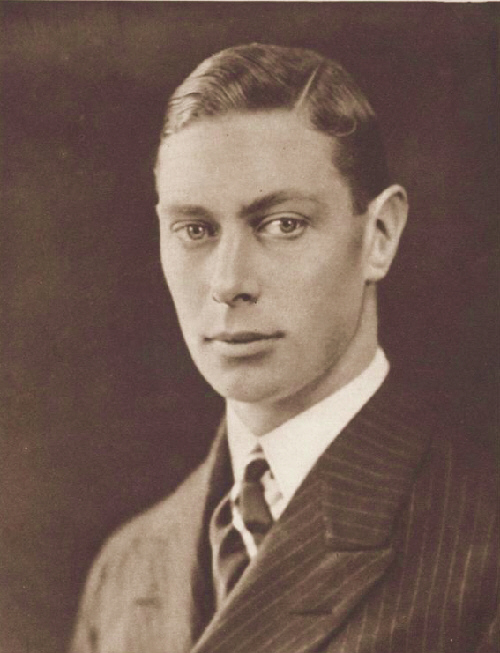
After the War:
The Future King, 1920
| |
King George VI was born Albert Frederick Arthur George Saxe-Coburg-Gotha on 14 December 1895, in Norfolk, England. His relationship with his mother was quite affectionate, but his father was harsh and critical of him. His tutors forced him to write with his right hand, though he was naturally left-handed. He developed a stammer around age eight that would be the focus of the film The King's Speech, and also suffered the indignity of wearing leg braces to correct his knock knees.
No one had an inkling he was destined one day to replace his brother, Edward VIII, as king. He was sent into the Navy. In 1909, he graduated from the Royal Naval Academy at Osborne, but finished at the bottom of his class in the final exam. Despite this, Albert progressed to the Royal Navy Academy at Dartmouth and then joined the Royal Navy as a midshipman. He served with distinction commanding "A" Turret on the battleship HMS Collingwood, at the Battle of Jutland. He received a promotion for the effective fire of his crew on SMS Derfflinger.
After surgery to correct an ulcer, he received reassignment to the Naval Air Service training station at Cranwell. "Bertie," as he was known to his family, was transferred to the RAF when the flying services consolidated. He became the first member of the Royal Family to learn to fly. After the Armistice, he found himself on RAF staff at Nancy, France.
John Philip Sousa
(1852-1934)
Band Leader, Composer
John Philip Sousa was born in Washington, DC, on 6 November 1854. His father was born in Spain of Portuguese parents and his mother was Bavarian. Sousa, known as the "March King," ranks among the most famous American composers and conductors.
Sousa was the leader of the U.S. Marine Band from 1880 until 1892. After leaving the Marine Band, he formed his own band, which toured Europe several times and was the first American band to make a tour around the world. On 25 December 1896, he debuted "The Stars and Stripes Forever"—his most loved piece. He was, therefore, already world famous when the Great War broke out.
|
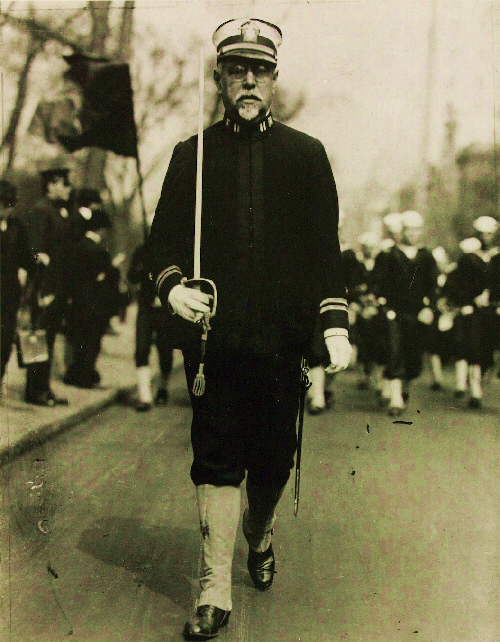
Sousa in Naval Uniform
| |
During the First World War, Sousa was asked to train young musicians from the Great Lakes Naval Training Center. Sousa prepared hundreds and formed bands for different Navy ships, eventually receiving the rank of lieutenant commander. He also found time to provide accompaniment for Liberty Loan rallies and Red Cross fundraising drives. He composed some two dozen pieces related to the war, the most recognizable being the "Field Artillery March." He also created a moving accompaniment to John McCrae's immortal poem "In Flanders Fields."
John Philip Sousa died on 6 March 1932 in Reading, Pennsylvania and is buried in the Congressional Cemetery in Washington, D.C. In 1987 a law was passed by Congress, and signed by President Reagan, designating "Stars and Stripes Forever" the official march of the United States of America.
|
|
|

Please support Roads to the Great War by adding the very best accounts of the Battle of Passchendaele to your library. This is how we keep our free publications rolling along.

Click on Icons to Learn More
|

The S.E.5a
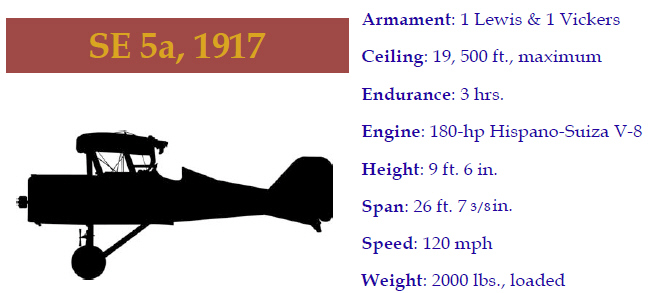
Arguably the most successful British fighter plane of the war, the S.E.5a was flown by Albert Ball, James McCudden, and Mick Mannock. It also was flown by a notable literary figure from the Great War, who was quite fond of his aircraft:
Just before my nineteenth birthday I was posted to London
Colney to join No. 56 Squadron, which was then forming to
go overseas. The squadron was to be equipped with the SE 5,
the last word in fighting-scouts, turned out by the Royal
Aircraft Factory. It was fitted with a 140-h.p. Hispano Suiza
engine with Constantinesco gear; and one Lewis gun, clamped on
to the top plane firing over the propeller. To change the
drums, the Lewis could be pulled down on a quadrant
mounting, and in this position it could, if necessary, be fired
straight upwards.
The machine (for 1917) was quite fast. It would do about a
hundred and twenty on the level and climb ten thousand feet
in twelve minutes. It could be looped and rolled and dived
vertically without breaking up. Altogether it was a first class
fighting-scout (probably the most successful designed
during the war), and was relied upon to re-establish the
Allied air supremacy lost during the winter. . .
[Later] Offensive Patrols were carried out daily, and, unfortunately, it soon became clear that, good as the SE 5 was, it was still not equal to the enemy...Later, when the SE 5 got a larger motor [SE 5a, ed.]
things looked up.
Cecil Lewis, from
Sagittarius Rising
|
|
|

After Caporetto, What Then on the Italian Front?
In the English-speaking world, accounts of what transpired on the Italian Front during the First World War generally end with
Caporetto in October 1917. It was most certainly a catastrophe for the Allies and Italy. Valuable reinforcements had to be sent from
the Western Front to avoid utter defeat. But it was far from a final determination for the Italian theater. As on the other fronts, things changed dramatically in 1918. The German forces that provided the cutting edge at Caporetto were withdrawn in anticipation of the Ludendorff Offensives planned for the
spring in the west. This left the Austro-Hungarian forces on their own. Further, the Italian government responded to the disaster with new seriousness and greater intensity, and designated the more careful and realistic Armando Diaz to replace the discredited Luigi Cadorna as supreme commander.
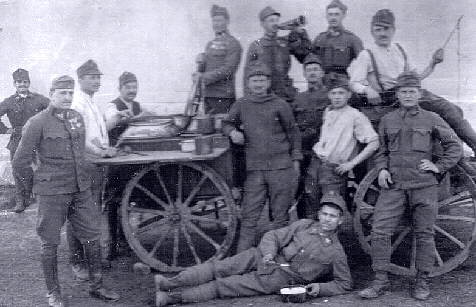
Austro-Hungarian Troops Before the Offensive on the Piave
A new defensive line was established anchored by the bastion of Monte Grappa and the nearby Il Montello hill formation, running from there along the Piave River to the Adriatic. Instead of knocking Italy out of the war, the Central Powers gradually became aware that their adversaries on this line—the reinvigorated Italian Army plus ground and air units from Britain, France, and the United States—held a stronger defensive position than before Caporetto. Worse, large formations of the Imperial forces that could be of great use on the decisive Western Front were tied down.
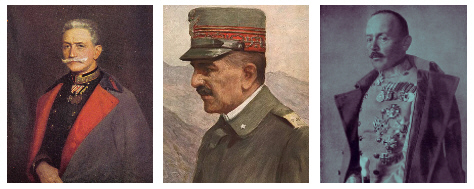
Opposing Commanders for the June 1918 Battle
Conrad von Hötzendorf - Armando Diaz - Svetozar Boroevic von Bojna
With strong encouragement from the Kaiser, pessimistic Emperor Karl committed to a major offensive in June 1918 in hopes of forcing a decision on the Italian Front. That battle is called the Battle of the Piave in most sources, the Battle of the Solstice in Italian works. It did turn out to be the decisive event of the Great War on the Italian Front, but not in the way the Central Powers had hoped. Despite a lack of artillery shells and any tactical surprise, however, 100,0000 of the Emperor's troops initially managed to punch across the Piave and seriously threaten the Allies' position. British Commander Lord Cavan later described the fate that, nonetheless, befell them:
Torrential rains brought the Piave down in flood, and added to the embarrassments of the enemy. Many of his bridges were washed away, and those which remained were constantly bombed by British and Italian aviators. By means of a succession of vigorous counter-attacks the enemy was gradually pressed back again both on the Piave and the mountain fronts. . .As a result, not only was the original front line entirely re-established, but that portion of the right bank of the Piave, between the Piave and the Side Rivers, which had been in Austrian hands since November, 1917, was cleared of the enemy.
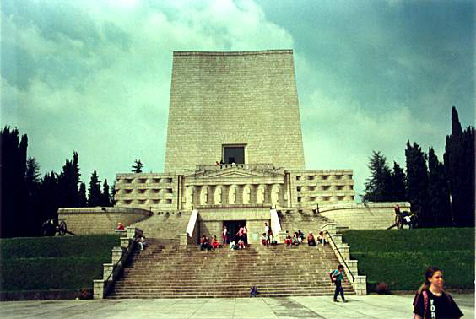
Italian Monument at Il Montello
The June attack would be the last gasp of Austria-Hungary as an empire and major power. After the failure of the offensive, its multi-ethnic army would begin dissolving beneath the feet of the generals. The last act, the Battle of Vittorio Veneto launched in late October, would complete the process of imperial disintegration.
|
|
|
Thanks to each and every one of you who has contributed material for this issue. Until September, your editor, Mike Hanlon. |
|
 (Or send it to a friend)
(Or send it to a friend)
|
Design by Shannon Niel
Content © Michael E. Hanlon
|
| |
|





